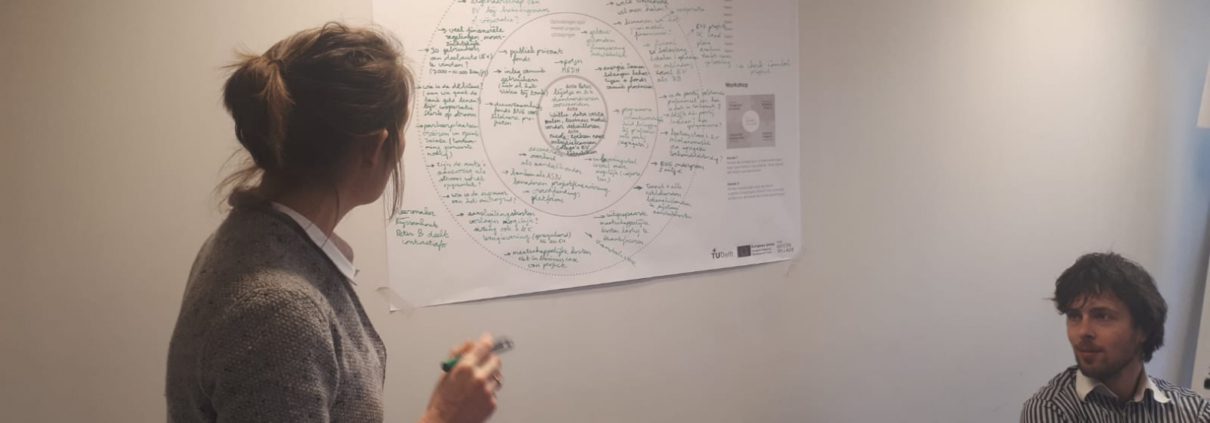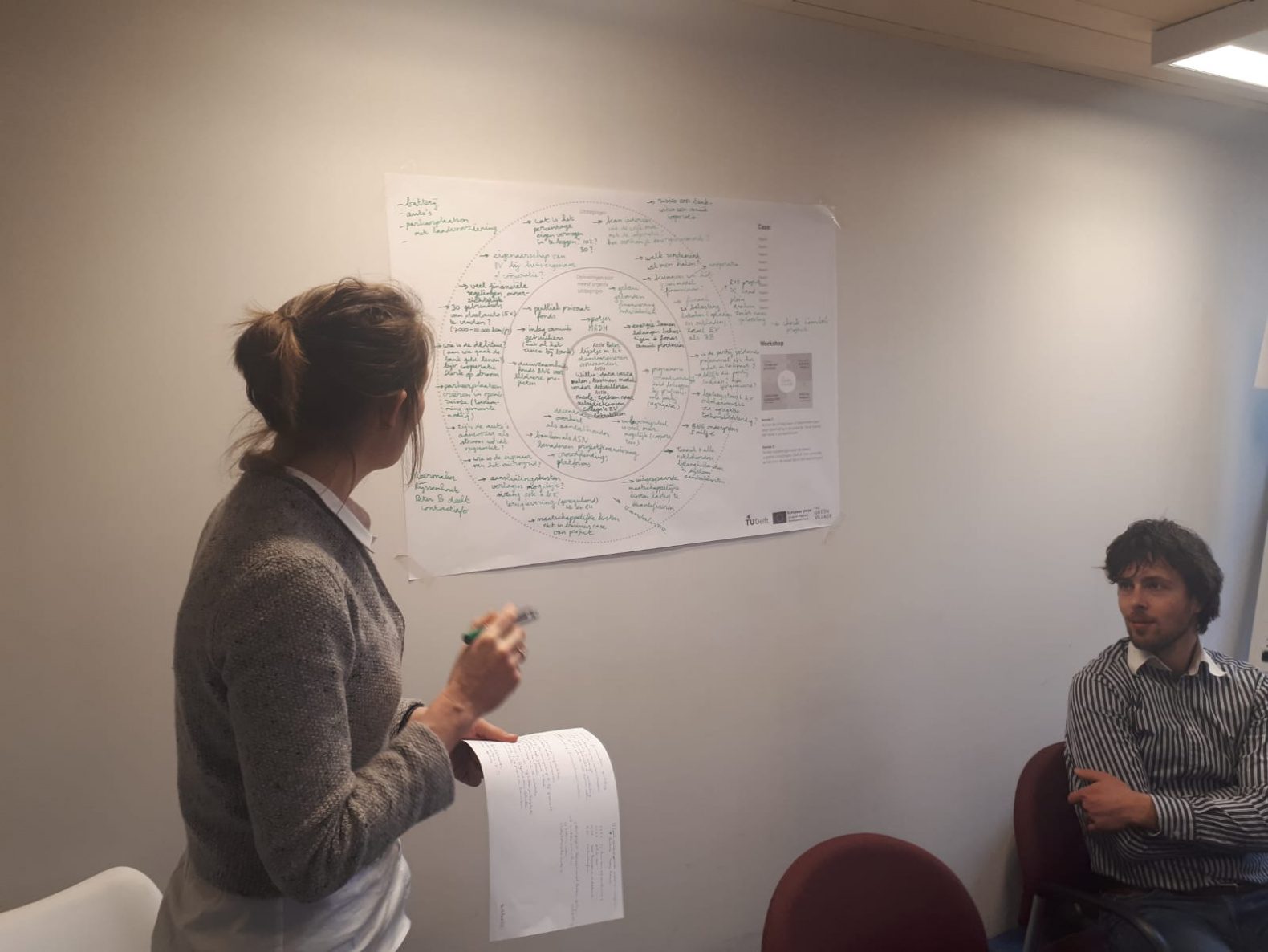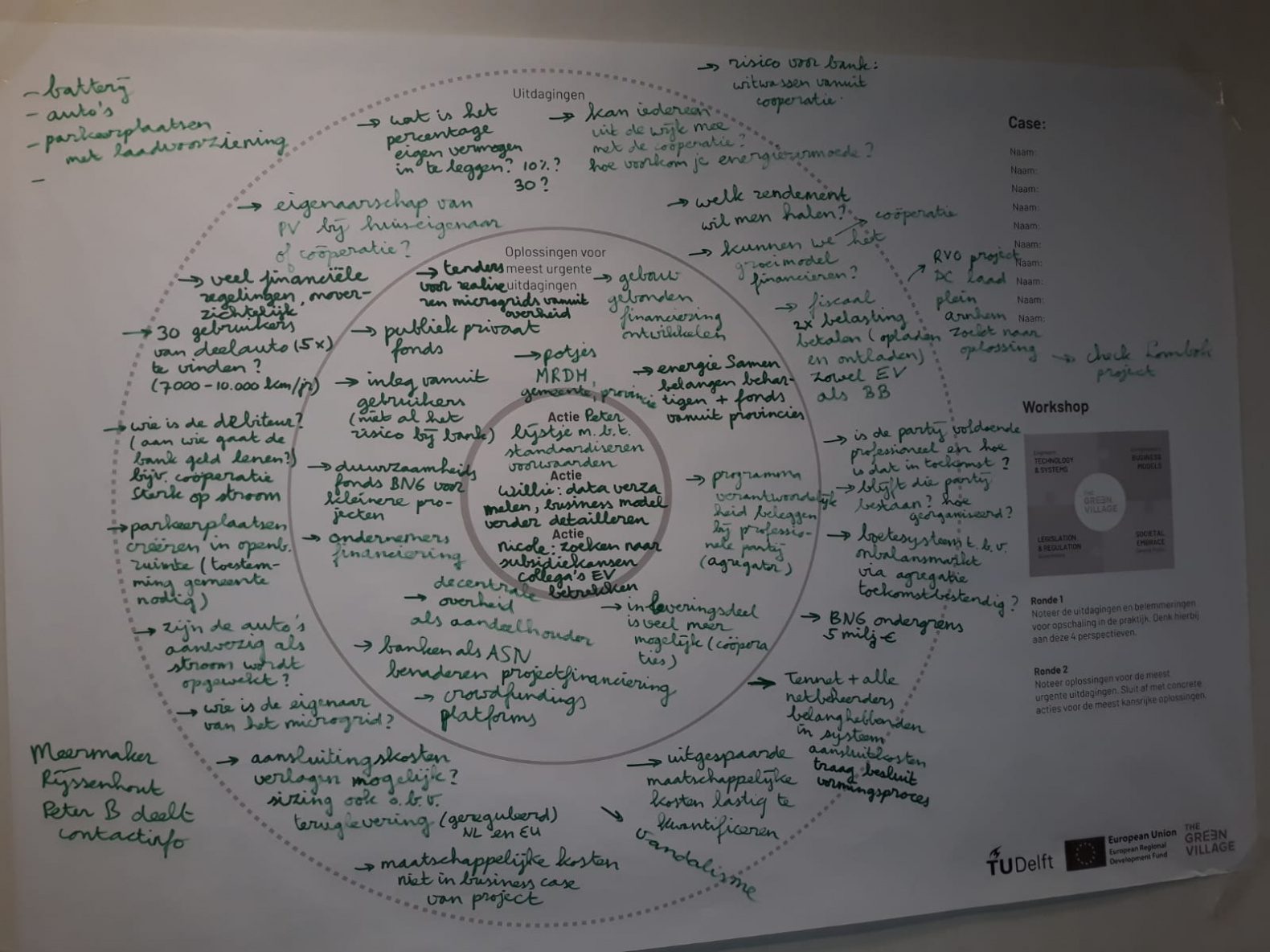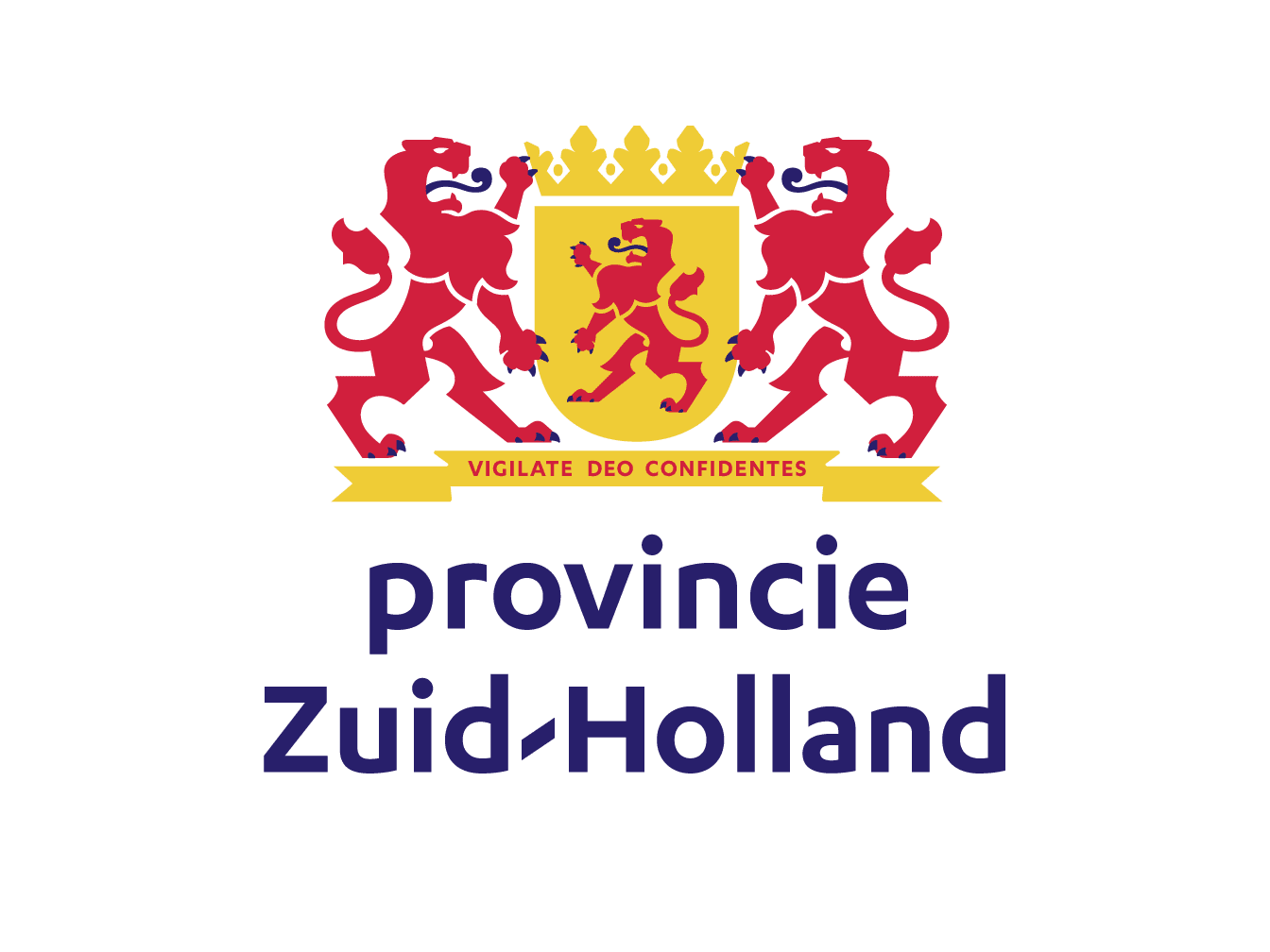Microgrids: the energy network of tomorrow
Our current electricity network is designed for central energy production. Due to the increase in the number of wind turbines and solar panels, energy is increasingly being generated decentrally rather than centrally. All the while, the increase in the number of electric cars means that the demand for electricity is growing. In short: changes that require an energy network that will grow with them. The major challenges are balancing the network (matching supply and demand) and ensuring sufficient capacity (network reinforcement).
Microgrids form an interesting link in this energy transition. They make it possible to balance energy locally, reducing the need for grid reinforcement. This saves time and costs. In addition to this, microgrids offer decentralized flexibility, so that the balance in the electricity network is more easily maintained in weather-dependent energy production by wind and solar parks.
The benefits of microgrids are known, why are they not yet fully used? In order to successfully scale up an innovation, four aspects should fall into place: the technology, the business model, laws and regulations and acceptance by users / residents of the Netherlands. The costs, financing and legal framework are bottlenecks that obstruct the upscaling of microgrids. These bottlenecks must be resolved before microgrids can be successfully applied on a large scale.
On the 11th of February, The Green Village organized a Microgrids workshop in which the possibilities for financing were explored on the basis of 2 microgrid projects. In this workshop, representatives from financial institutions, various companies, government organizations, technical university, residents’ cooperatives and a network company came together. The aim is to identify the bottlenecks and more importantly, to subsequently formulate possible solutions and follow-up steps and by doing this accelerate the scaling up of microgrids.
Challenges related to the financing of microgrids:
- When batteries are used (both Blue Battery and car batteries) in a microgrid, energy taxes are paid twice, both when charging and discharging. The connection costs (compensation to network operators) cannot be reduced because they are based on the capacity of a connection (both off-take and power-up of electricity). Microgrids require a new business model, but the decision-making process is endless because many different parties are involved.
- Banks require a substantial investment in equity. The minimum return required by the bank is difficult to qualify and may therefore not be achieved. There are various incentive regulations, but it is difficult to gain insight into this.
- There is little practical knowledge about the method of organization: who is the owner of which part of the system, who is the bank’s borrower, who is the party who manages and owns the microgrid sufficiently professionally? Is the professionalism and viability towards the future also assured? There are no laws and rules for this yet.
- In the social field, the question is how to prevent energy poverty in households that are financially unable to participate in such initiatives.
- There is also the concern to protect the system technically against vandalism and abuse.
Thinking in possibilities
- In the pioneering phase in which these types of projects are still underway, financing is benefited by funds made available for energy transition made available by banks, network managers or governments. For residents, these funds must be easy to find and easy to use.
- Share ownership by decentralized governments or public financing can be possibilities, crowdfunding too. In all cases, it is important that a good business case is made in advance that incorporates the characteristics of the project. Practical researches such as those currently taking place at The Green Village help with this. Building on this, a marketing strategy must be worked out for the integral concept, with attention to both the financial aspects and the social return and market approach.
For more information you can contact Lidewij van Trigt, Program Manager Energy.
The following parties participated in this workshop:
Provincie Zuid Holland
Rabobank
Bank van Nederlandse Gemeenten
RVO
Gemeente Den Haag
Stedin
Energie Samen
Escozon
TU Delft
AquaBattery
Groene Mient
Lelystad Airport Business Parc
The Green Village
Yellow Space
——————————————————————————————————————————– NL
Ons huidige elektriciteitsnetwerk is ontworpen voor centrale energieproductie. Door de toename van het aantal windmolens en zonnepanelen wordt energie steeds meer decentraal opgewekt in plaats van centraal. Tegelijkertijd zorgt de stijging van het aantal elektrische auto’s ervoor, dat de vraag naar elektriciteit groeit. Kortom: veranderingen die vragen om een energienetwerk dat met hen meegroeit. De grote uitdagingen zijn het balanceren van het net (afstemmen van vraag en aanbod) en zorgen voor voldoende capaciteit (netverzwaring).
Microgrids vormen een interessante schakel in deze energietransitie. Zij maken het mogelijk om energie lokaal te balanceren, waardoor de noodzaak voor netverzwaring minder groot wordt. Dat scheelt tijd en kosten. Daarnaast bieden microgrids decentrale flexibiliteit, waardoor de balans in het elektriciteitsnetwerk makkelijker wordt behouden bij weersafhankelijke energieproductie door wind- en zonneparken.
De voordelen van microgrids zijn bekend, waarom worden ze nog niet volop toegepast? Om een innovatie succesvol te kunnen opschalen horen de vier aspecten op hun plaats te vallen: de techniek, het businessmodel, wet- en regelgeving en acceptatie door de gebruikers/ inwoners van Nederland. De kosten, de financiering en het juridische kader vormen knelpunten die de opschaling van microgrids belemmeren. Deze knelpunten moeten worden opgelost, voordat microgrids succesvol op grote schaal kunnen worden toegepast.
Op 11 februari jongstleden organiseerde The Green Village een Microgrids workshop waarin aan de hand van 2 microgrid-projecten (PowerParking en Blue Battery) werd ingegaan op de mogelijkheden voor financiering. In deze workshop kwamen vertegenwoordigers samen van financiële instellingen, verschillende bedrijven, overheidsorganisaties, een technische universiteit, bewonerscoöperaties en een netwerkbedrijf. Met als doel om de knelpunten te identificeren en nog belangrijker, om vervolgens mogelijke oplossingen en vervolgstappen te formuleren en zo de opschaling van microgrids te versnellen.
Uitdagingen rondom de financiering van microgrids:
- Bij inzet van batterijen (zowel Blue Battery als autobatterijen) in een microgrid betaalt men twee keer energiebelasting, zowel bij het laden als het ontladen. De aansluitkosten (vergoeding aan netbeheerders) kunnen niet omlaag, omdat ze op de capaciteit van een aansluiting (zowel afname als teruglevering van stroom) zijn gebaseerd. Microgrids vragen om een nieuw business model, maar de besluitvorming duurt eindeloos omdat er veel verschillende partijen bij betrokken zijn.
- Banken vragen een substantiële inleg van het eigen vermogen. Het door de bank minimaal vereiste rendement is lastig te kwantificeren en wordt daardoor mogelijk niet gehaald. Er zijn diverse stimuleringsregelingen, maar het is lastig om daar inzicht in te krijgen.
- Er is weinig praktijkkennis over de wijze van organisatie: wie is de eigenaar van welk deel van het systeem, wie is richting bank de kredietnemer, wie is de partij die het microgrid beheert? Is de professionaliteit en levensvatbaarheid richting de toekomst ook verzekerd? Hier bestaan nog geen wetten en regels voor.
- Op maatschappelijk gebied is de vraag hoe je energie armoede voorkomt bij huishoudens die financieel niet in staat zijn om aan zulke initiatieven deel te nemen.
- Ook is er de zorg om het systeem technisch goed te beveiligen tegen vandalisme en misbruik.
Denken in mogelijkheden
- In de pioniersfase waarin dit soort projecten zich nog bevinden, is de financierbaarheid gebaat bij fondsen die ten behoeve van energietransitie beschikbaar worden gesteld door banken, netbeheerders of overheden. Voor inwoners moeten deze fondsen goed vindbaar zijn en gemakkelijk te gebruiken.
- Aandeelhouderschap door decentrale overheden of publieke financiering kunnen mogelijkheden zijn, crowdfunding ook. In alle gevallen is het belangrijk dat er vooraf een goede business case wordt gemaakt waarin de kenmerken van het project zijn meegenomen. Praktische onderzoeken zoals die nu bij The Green Village plaatsvinden, helpen hierbij. Hierop voortbordurend moet voor het integrale concept een marketingstrategie worden uitgewerkt, met aandacht voor zowel de financiële aspecten als het maatschappelijk rendement en de marktbenadering.
Meer weten? Neem contact op met Lidewij van Trigt, Programma Manager Energie.
Aan deze workshop werkten de volgende partijen mee:
Provincie Zuid Holland
Rabobank
Bank van Nederlandse Gemeenten
RVO
Gemeente Den Haag
Stedin
Energie Samen
Escozon
TU Delft
AquaBattery
Groene Mient
Lelystad Airport Business Parc
The Green Village
Yellow Space








